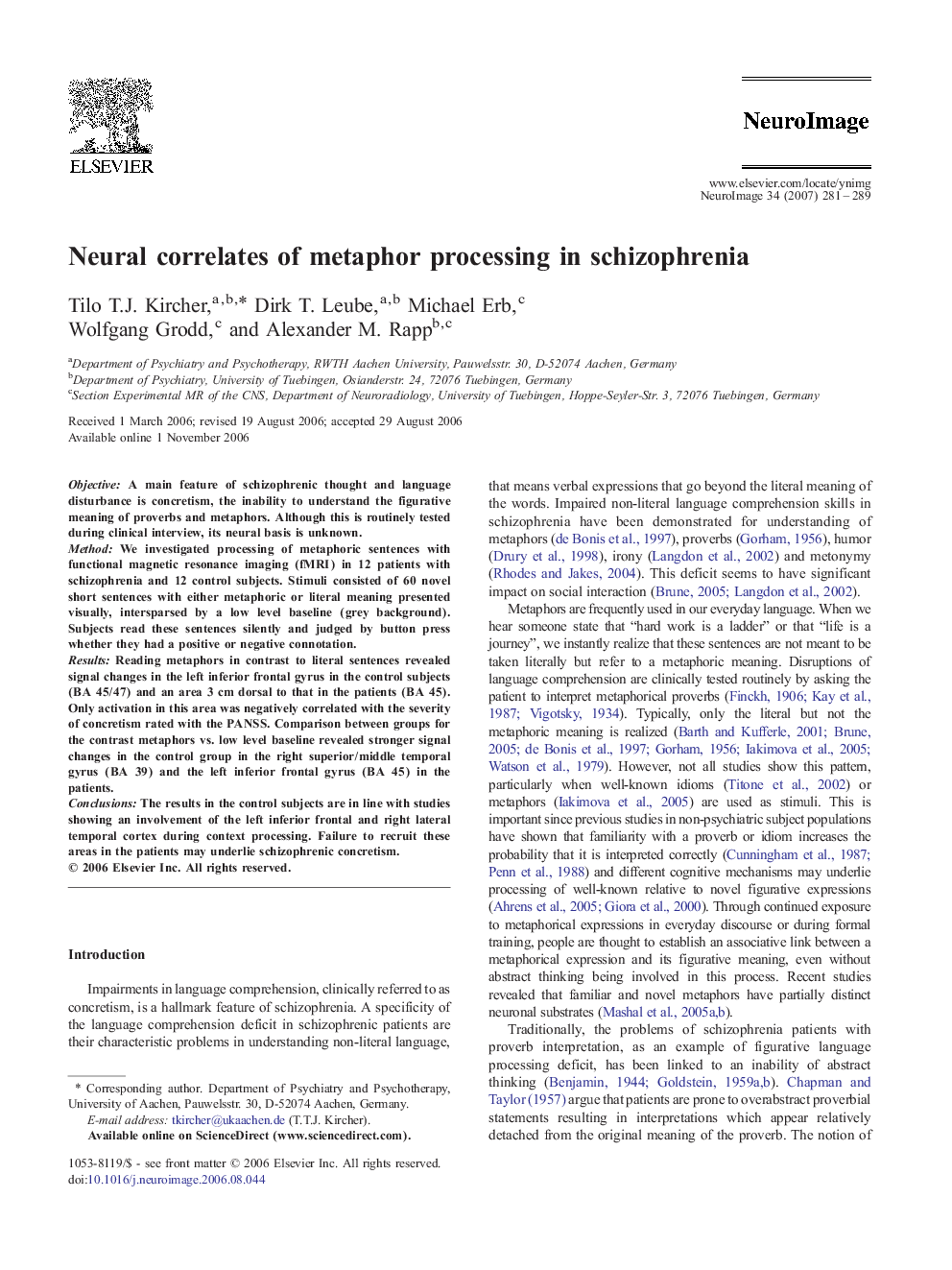| Article ID | Journal | Published Year | Pages | File Type |
|---|---|---|---|---|
| 3074322 | NeuroImage | 2007 | 9 Pages |
Objective:A main feature of schizophrenic thought and language disturbance is concretism, the inability to understand the figurative meaning of proverbs and metaphors. Although this is routinely tested during clinical interview, its neural basis is unknown.Method:We investigated processing of metaphoric sentences with functional magnetic resonance imaging (fMRI) in 12 patients with schizophrenia and 12 control subjects. Stimuli consisted of 60 novel short sentences with either metaphoric or literal meaning presented visually, intersparsed by a low level baseline (grey background). Subjects read these sentences silently and judged by button press whether they had a positive or negative connotation.Results:Reading metaphors in contrast to literal sentences revealed signal changes in the left inferior frontal gyrus in the control subjects (BA 45/47) and an area 3 cm dorsal to that in the patients (BA 45). Only activation in this area was negatively correlated with the severity of concretism rated with the PANSS. Comparison between groups for the contrast metaphors vs. low level baseline revealed stronger signal changes in the control group in the right superior/middle temporal gyrus (BA 39) and the left inferior frontal gyrus (BA 45) in the patients.Conclusions:The results in the control subjects are in line with studies showing an involvement of the left inferior frontal and right lateral temporal cortex during context processing. Failure to recruit these areas in the patients may underlie schizophrenic concretism.
